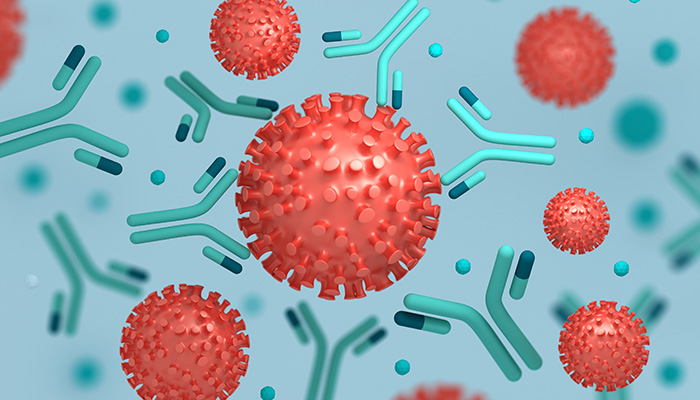iMLS-IMMUNOLOGY
- Description
- Curriculum
- Reviews
-
1HYPERSENSITIVITY REACTIONS
Hypersensitivity is a normal but exaggerated or uncontrolled immune response to an antigen that can produce inflammation, cell destruction, or tissue injury. It can be classified as immediate hypersensitivity (which is antibody mediated) and delayed hypersensitivity (cell mediated).
-
2RECORDED LIVE CLASS - HYPERSENSITIVITY REACTIONS
-
3HYPERSENSITIVITY REACTIONS QUIZ
-
4ORGAN-SPECIFIC AND MIDSPECTRUM AUTOIMMUNE DISEASES PART I
The hallmark of autoimmune disease is tissue injury caused by T lymphocytes or antibody reactivity to “immunologic” self. Immune activation may be initiated by infection or by activation of the immune system in the absence of an external threat.
-
5RECORDED LECTURE - ORGAN SPECIFIC AND MID SPECT I
Mid-spectrum autoimmune disorders include: Cardiovascular, Collagen Vascular Diseases, Endocrine gland diseases, Pancreatic disease, adrenal gland disease, reproductive disease, Exocrine gland diseases, Gastrointestinal diseases.
-
6ORGAN-SPECIFIC AND MIDSPECTRUM AUTOIMMUNE DISEASES PART II
-
7RECORDED LECTURE - MID SPECT II
In this lecture, the following autoimmune disorders are discussed: Autoimmune Hepatitis, Idiopathic Biliary Cirrhosis Inflammatory Bowel Disease Autoimmune Hematologic Diseases Neuromuscular Diseases Autoimmune Renal Diseases, etc
-
8SYSTEMIC LUPUS ERYTHEMATOSUS AND IIF-ANAs
SLE is a multisystem autoimmune disorder that can affect the skin, joints, and almost any organ, including the lungs, kidneys, heart, and brain. Systemic lupus may include periods in which few, if any, symptoms are evident (remission) and other times when the disease becomes more active (fare).
-
9RECORDED LECTURE - SLE
Systemic Lupus Erythematosus (SLE) is the classic model of an autoimmune disease. Different forms of Lupus include: 1. Discoid (cutaneous) lupus: always limited to the skin, it does not generally involve the body’s internal organs but can evolve into the systemic form of the disease. The ANA test may be negative or positive at a low titer 2. Drug-induced lupus: most commonly associated with hydralazine hydrochloride and procainamide hydrochloride. The ANAs are particularly to histone. 3. Neonatal Lupus: Neonatal lupus is associated with acquired of maternal autoantibodies, specifically anti-Ro/SS-A or anti-La/ SS-B, that can affect the skin, heart, and blood of the fetus and newborn. Neonatal lupus is not systemic lupus. 4. SLE is usually more severe than discoid lupus. It is a multisystem autoimmune disorder that can affect the skin, joints, and almost any organ, including the lungs, kidneys, heart, and brain. Systemic lupus may include periods in which few, if any, symptoms are evident (remission) and other times when the disease becomes more active (fare).
-
10RECORDED LECTURE IIF-ANA STAINING PATTERNS INTERPRETATION - ANTINUCLEAR ANTIBODIES TESTING OF AUTO-IMMUNE DISORDERS.
IIF-ANA PATTERNS include: Homogenous, speckled, peripheral, nucleolar, discrete..
-
11RHEUMATOID ARTHRITIS
Rheumatic diseases are the combination of inflammatory diseases that affect joints, they are among the oldest diseases recognized, but the cause of RA remains unknown. The prevalence of arthritis increases significantly with age, Obesity, overweight and physical inactivity. Females are more likely than males to suffer from arthritis.
-
12RECORDED LECTURE-RA
Rheumatic diseases are the combination of inflammatory diseases that affect joints, they are among the oldest diseases recognized, but the cause of RA remains unknown. The prevalence of arthritis increases significantly with age, Obesity, overweight and physical inactivity. Females are more likely than males to suffer from arthritis.
RA is a chronic, multisystemic, autoimmune disorder and a progressive inflammatory disorder of the joints. It is, however, a highly variable disease that ranges from a mild illness of brief duration to a progressive destructive polyarthritis associated with a systemic vasculitis.
-
13INFECTIOUS DISEASES SEROLOGY PART I
-
14PRACTICE QUESTIONS - INFECTIOUS DISEASE SEROLOGY I
-
15INFECTIOUS DISEASES SEROLOGY PART II - VIRAL HEPATITIS
-
16RECORDED LECTURE -VIRAL HEPATITIS
The term hepatitis refers to inflammation of the liver.
Viral hepatitis is the most common liver disease worldwide. The viral agents of acute hepatitis can be divided into two major groups, as follows:
• Primary hepatitis viruses: A, B, C, D, E, and G
• Secondary hepatitis viruses: EBV, CMV, herpesvirus, and others
As a clinical disease, hepatitis can occur in acute or chronic forms. The signs and symptoms of hepatitis are extremely variable. It can be mild, transient, and completely asymptomatic, or it can be severe, prolonged, and ultimately fatal. Many fatalities are attributed to hepatocellular carcinoma, of which hepatitis viruses B and C are the primary causes. The course of viral hepatitis can take one of four forms: acute, fulminant acute, sub-clinical without jaundice, and chronic
-
17PRACTICE QUESTIONS - VIRAL HEPATITIS
-
18INFECTIOUS DISEASES SEROLOGY PART III
-
19PRACTICE QUESTIONS - INFECTIOUS DISEASE SEROLOGY III
-
20INFECTIOUS DISEASES SEROLOGY PART IV
Immunologic disorders can be divided into primary, secondary, and other types of disorders mediated through immune mechanisms.
Primary immune deficiency disorders (PIDs) are a group of chronic disorders in which a genetic error related to the body’s immune system is missing or functions improperly. These unusual autosomal or X-linked hereditary disorders of the innate or adaptive immune system are usually monogenic disorders affecting host defenses.
-
21PRACTICE QUESTIONS - INFECTIOUS DISEASE SEROLOGY IV
-
22ACQUIRED IMMUNODEFICIENCY SYNDROME (AIDS)
AIDS is the best-known immunodeficiency. Patients with AIDS exhibit some of the most severe manifestations of cell-mediated immunity.
-
23RECORDED LECTURE - AIDS
AIDS is the best-known immunodeficiency. Patients with AIDS exhibit some of the most severe manifestations of cell-mediated immunity
-
24PRACTICE QUESTIONS - ACQUIRED IMMUNODEFICIENCY SYNDROME
-
28PRECIPITATION AND PARTICLE AGGLUTINATION METHODS
Precipitation and agglutination are unlabeled immunoassays. These assay methods produce a visible expression of the aggregation of antigens and antibodies.
-
29RECORDED LECTURE - PRECIPITATION AND PARTICLE AGGLUTINATION
Precipitation and agglutination are unlabeled immunoassays. These assay methods produce a visible expression of the aggregation of antigens and antibodies. Precipitation is the term for the aggregation of soluble test antigens. Precipitation is the combination of soluble antigen with soluble antibody to produce a visible insoluble complex. Agglutination is the process whereby specific antigens (e.g., RBCs) aggregate to form larger visible clumps when the corresponding specific antibody is present in the serum. The IgM class of antibodies is the best at agglutination and precipitation.








